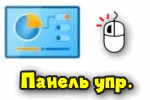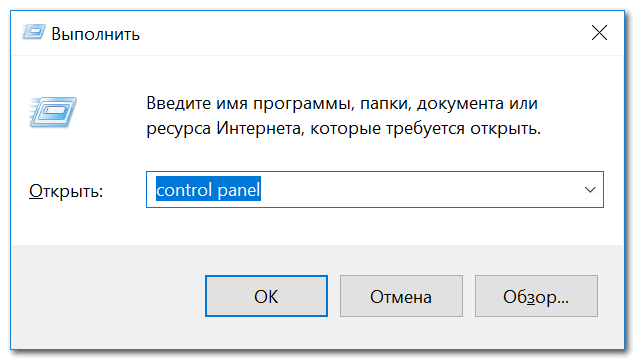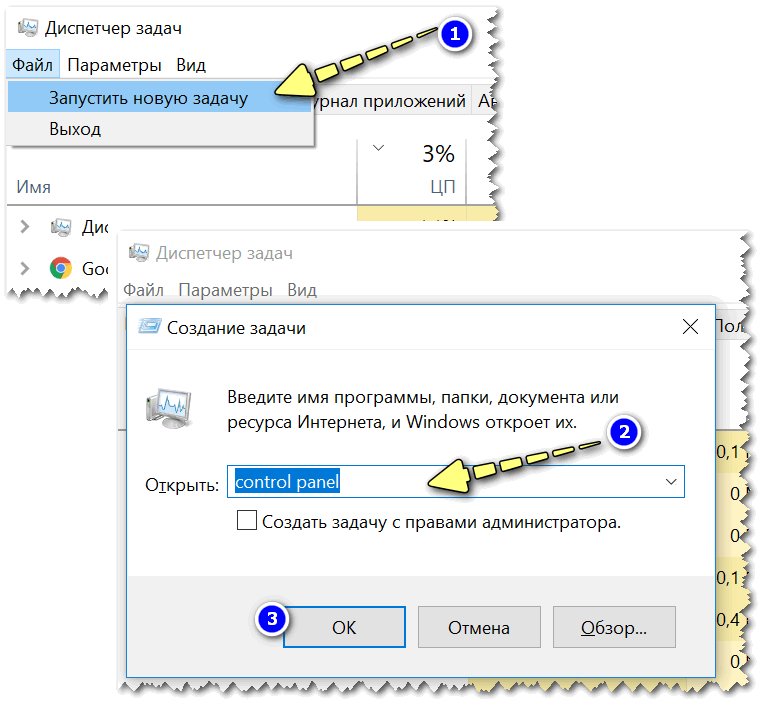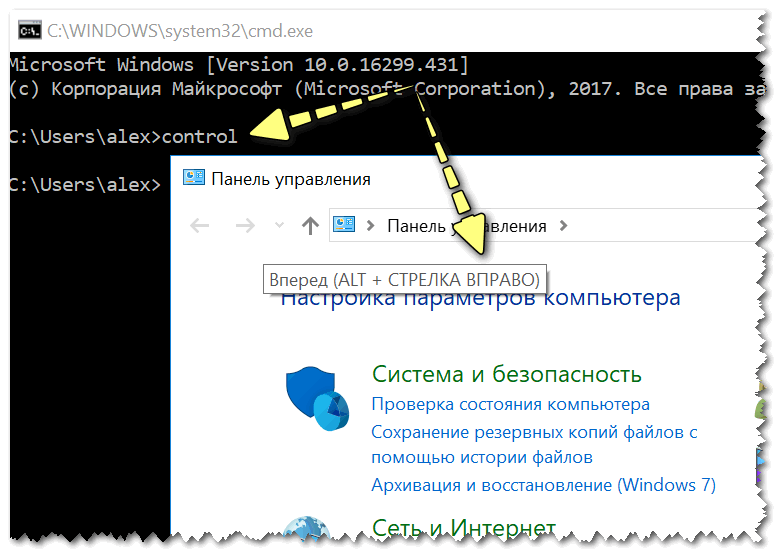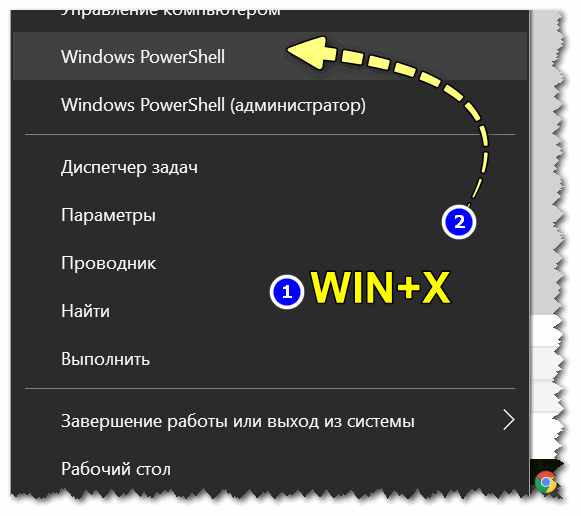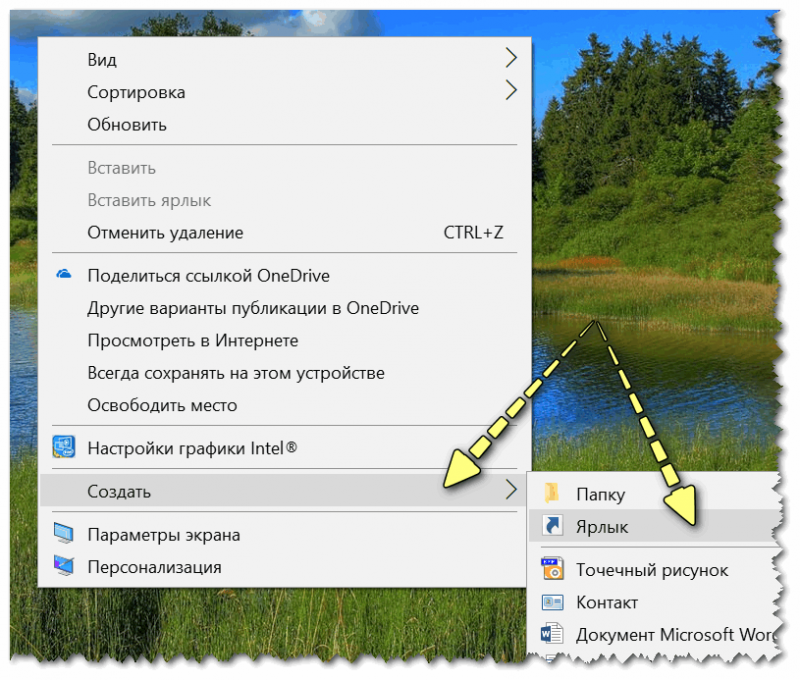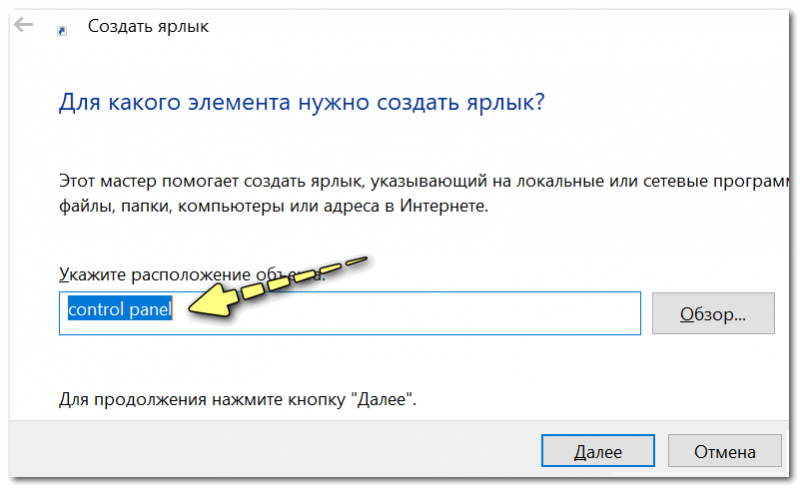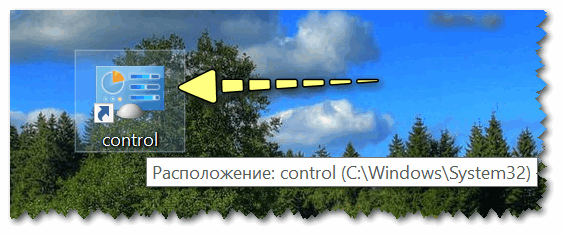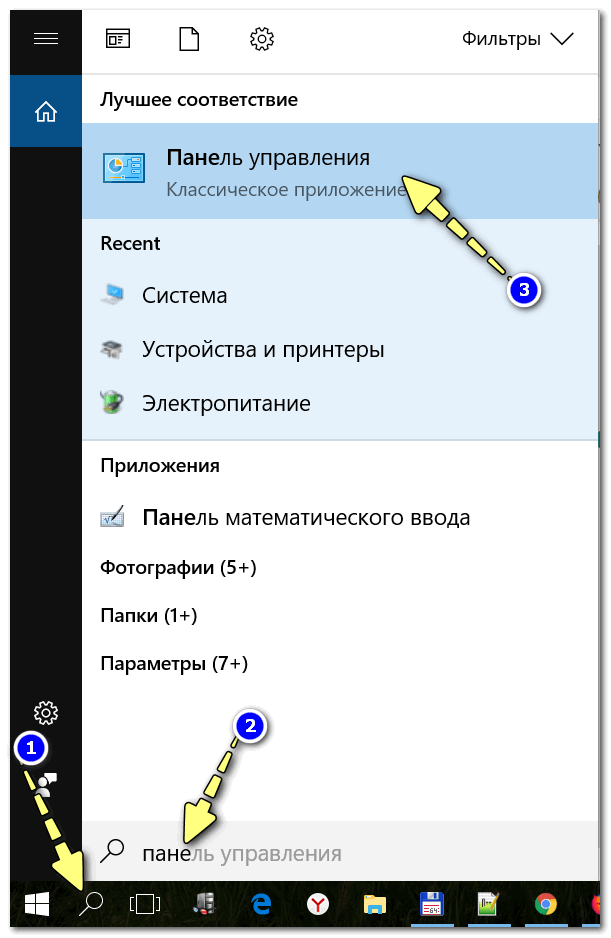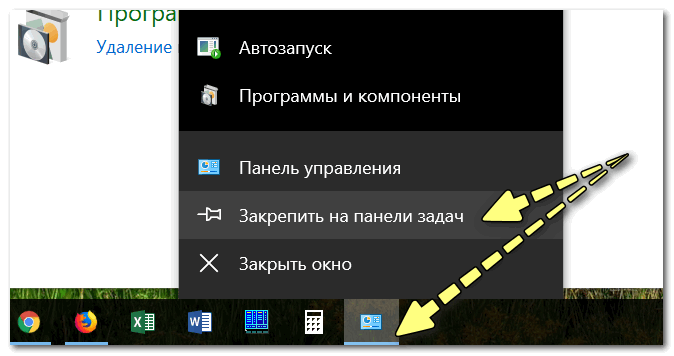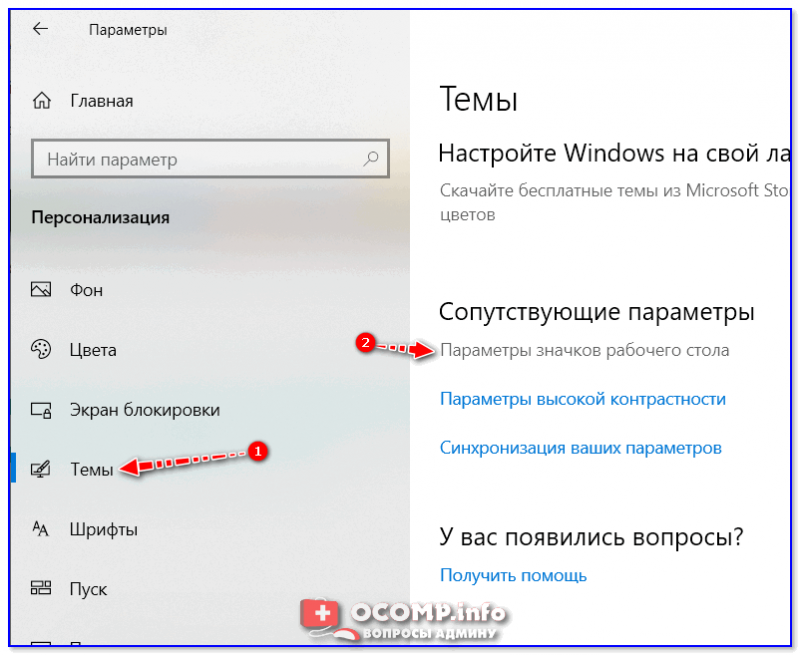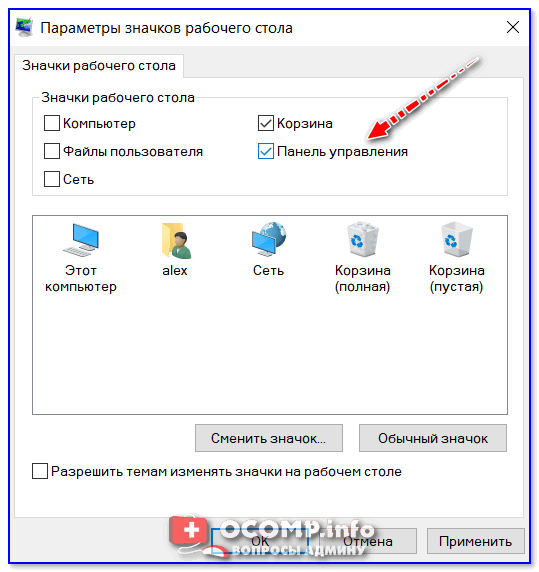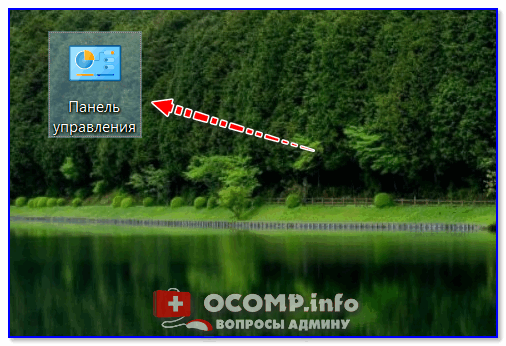- Как открыть панель управления в Windows (в т.ч. в Windows 10, где убрали ссылки на нее)
- Как войти в панель управления / Control Panel
- Способ 1: универсальный (для Windows 7, 8, 10)
- Способ 2: через Power Shell / Командную строку (универсальный)
- Способ 3: с помощью созданного ярлыка на рабочем столе
- Способ 4: с помощью поиска Windows
- Способ 5: через параметры отображения значков рабочего стола (Windows 10)
- How to run Control Panel tools by typing a command
- Summary
- More Information
- Where is Control Panel?
- Open Control Panel
- Find Control Panel items
- Canonical Names of Control Panel Items
- Control Panel Canonical Names
- Action Center
- Administrative Tools
- AutoPlay
- Biometric Devices
- BitLocker Drive Encryption
- Color Management
- Credential Manager
- Date and Time
- Default Programs
- Device Manager
- Devices and Printers
- Display
- Ease of Access Center
- Family Safety
- File History
- Folder Options
- Fonts
- HomeGroup
- Indexing Options
- Infrared
- Internet Options
- iSCSI Initiator
- iSNS Server
- Keyboard
- Location Settings
- Mouse
- MPIOConfiguration
- Network and Sharing Center
- Notification Area Icons
- Pen and Touch
- Personalization
- Phone and Modem
- Power Options
- Programs and Features
- Recovery
- Region
- RemoteApp and Desktop Connections
- Sound
- Speech Recognition
- Storage Spaces
- Sync Center
- System
- Tablet PC Settings
- Taskbar and Navigation
- Troubleshooting
- TSAppInstall
- User Accounts
- Windows Anytime Upgrade
- Windows Defender
- Windows Firewall
- Windows Mobility Center
- Windows To Go
- Windows Update
- Work Folders
- Deprecated Control Panel Canonical Names
- Using Canonical Names in Local Group Policy
- Hiding individual Control Panel items
- Showing individual Control Panel items
- Remarks
Как открыть панель управления в Windows (в т.ч. в Windows 10, где убрали ссылки на нее)
Недавно заметил, что по клику правой кнопки мышки по ПУСК, больше не появляется привычного меню: в нем нет ссылки на командную строку и на панель управления (что в первую очередь нужно!). В самом меню ПУСК — тоже нет на нее ссылки. Как ее открыть-то? Может быть я подцепил вирус?
PS Установлена Windows 10, последняя обновленная версия на сегодняшний день (то бишь на 20 мая 2018г.).
Доброго времени суток!
Да, похоже от этой классической панели разработчики Windows хотят со временем отказаться совсем.
Новые параметры в Windows 10 и классическая Control Panel / Кликабельно
Но на сегодняшний день, всё же, в нее пока еще достаточно часто требуется заходить для изменения множества параметров и настроек. В этой справочной статье покажу несколько способов, как ее можно открыть (часть из способов универсальны и работают в разных ОС Windows).
Как войти в панель управления / Control Panel
Способ 1: универсальный (для Windows 7, 8, 10)
- нажмите сочетание кнопок Win+R (должно появиться окно «Выполнить» в углу экрана);
- впишите команду » Control » (без кавычек, см. на скрин ниже);
- нажмите OK или Enter. Собственно, и всё, всего 3 действия!
Win+R — открываем панель управления (команда control)
Кстати, хочу обратить внимание, что вместо команды » Control » можно использовать и » Control Panel » (полный вариант).
Control Panel — так тоже допускается
Также есть еще один альтернативный вариант:
- нажмите сочетание клавиш Ctrl+Shift+Esc (или Ctrl+Alt+Del ) — нам нужно открыть диспетчер задач;
- далее нажмите по меню «Файл/Новая задача»;
- в строку «Открыть» впишите команду «Control Panel» (пример см. ниже).
Открывает Control Panel через диспетчер задач
Способ 2: через Power Shell / Командную строку (универсальный)
Панель управления также можно открыть через командную строку. Для этого в ней нужно вписать всего одну команду » Control » и нажать на Enter.
Открываем панель управления через командную строчку
Кстати, что касается Windows 10 — то в обновленных версиях при нажатии на Win+X (или правой кнопкой мышки по ПУСК) — в меню быстрого вызова нет командной строки, но есть Power Shell. Для открытия панели управления можно воспользоваться и им.
Win+X — меню быстрого вызова
В Power Shell достаточно ввести ту же команду Control и нажать на Enter. Пример продемонстрирован чуть ниже.
Power Shell — мощная замена командной строке.
Способ 3: с помощью созданного ярлыка на рабочем столе
Еще один очень удобный способ — это создать спец. значок на рабочем столе, с помощью которого вы всегда сможете в 1 клик мышки получать доступ к панели управления.
Чтобы его сделать : кликните правой кнопкой мышки в любом месте рабочего стола, в появившемся меню выберите «Создать -> ярлык» (см. пример ниже).
Далее в строку расположения укажите вместо пути просто команду Control Panel (как примере ниже). Кстати, имя ярлыку можете задать любое.
в путь ярлыка пишем команду Control
В итоге на рабочем столе появится ярлык (как на скрине ниже) для быстрого запуска панели управления.
Способ 4: с помощью поиска Windows
В Windows 10, кстати говоря, рядом с меню ПУСК есть очень «умная» поисковая строка (по крайней мере, значок с лупой там присутствует в настройках по умолчанию) .
Так вот, достаточно щелкнуть по этому значку (1), и вписать в строку поиска «панель» (2), как Windows предложит вам наиболее соответствующий вариант (3) — то бишь в данном случае «Панель управления». Как и показано на скрине ниже.
Поисковая строка в Windows 10
Кстати, чтобы каждый раз не искать панель управления , ее можно закрепить на пели задач. Для этого достаточно щелкнуть правой кнопкой мышки по значку открытой панели и выбрать функцию «Закрепить» (как показано на скрине ниже).
Закрепить панель на панели задач (извиняюсь за тавтологию)
Как это будет выглядеть в итоге можете увидеть из моем примера (1 клик — и вы уже в Control Panel) .
Моя панель задач: калькулятор + панель управления основные атрибуты
Способ 5: через параметры отображения значков рабочего стола (Windows 10)
Сначала нужно открыть параметры Windows (можно через ПУСК, можно с помощью сочетания Win+i ) и перейти в раздел: «Персонализация / темы / параметры значков рабочего стола» (см. скриншот ниже).
Далее поставить галочку рядом с отображением значка «Панель управления» , и сохранить настройки.
Собственно, почти сразу же у вас на рабочем столе появится панель управления — теперь можно быстро открывать ее без всяких дополнительных команд.
Думаю, что предложенных способов должно быть достаточно.
How to run Control Panel tools by typing a command
Summary
This article describes how to run Control Panel tools in Windows by typing a command at a command prompt or in the Open box.
More Information
To run a Control Panel tool in Windows, type the appropriate command in the Open box or at a command prompt.
NOTE: If you want to run a command from a command prompt, you must do so from the Windows folder. Also, note that your computer may not have all of the tools listed in this article, as your Windows installation may not include all of these components.
Control panel tool Command
——————————————————————
Accessibility Options control access.cpl
Add New Hardware control sysdm.cpl add new hardware
Add/Remove Programs control appwiz.cpl
Date/Time Properties control timedate.cpl
Display Properties control desk.cpl
FindFast control findfast.cpl
Fonts Folder control fonts
Internet Properties control inetcpl.cpl
Joystick Properties control joy.cpl
Keyboard Properties control main.cpl keyboard
Microsoft Exchange control mlcfg32.cpl
(or Windows Messaging)
Microsoft Mail Post Office control wgpocpl.cpl
Modem Properties control modem.cpl
Mouse Properties control main.cpl
Multimedia Properties control mmsys.cpl
Network Properties control netcpl.cpl
NOTE: In Windows NT 4.0, Network
properties is Ncpa.cpl, not Netcpl.cpl
Password Properties control password.cpl
PC Card control main.cpl pc card (PCMCIA)
Power Management (Windows 95) control main.cpl power
Power Management (Windows 98) control powercfg.cpl
Printers Folder control printers
Regional Settings control intl.cpl
Scanners and Cameras control sticpl.cpl
Sound Properties control mmsys.cpl sounds
System Properties control sysdm.cpl
NOTE: The Scanners and Cameras applet (sticpl.cpl) cannot be run in Windows Millennium. It has been replaced by the Scanners and Cameras Folder, which is similar in function to folders like Printers and Dial-up Networking.
Windows substitutes the name of the tool you want to run for %1%. For example:
Where is Control Panel?
You can use Control Panel to change settings for Windows. These settings control nearly everything about how Windows looks and works, and you can use them to set up Windows so that it’s just right for you.
Open Control Panel
In the search box on the taskbar, type control panel, and then select Control Panel.
For Windows 8.1 / Windows RT 8.1
Swipe in from the right edge of the screen, tap Search (or if you’re using a mouse, point to the upper-right corner of the screen, move the mouse pointer down, and then click Search), enter Control Panel in the search box, and then tap or click Control Panel.
Click the Start button, and then click Control Panel.
Find Control Panel items
When you’re in Control Panel:
Use search. To find a setting you’re interested in or a task you want to perform, type a word or phrase in the search box. For example, type «sound» to find specific settings for your sound card, system sounds, and the volume icon on the taskbar.
Browse. You can explore Control Panel by selecting different categories (for example, System and Security, Programs, or Ease of Access), and viewing common tasks listed under each category. Or, under View by, click either Large icons or Small icons to view a list of all Control Panel items.
If you browse Control Panel by icons, you can quickly find an item in the list by typing the first letter of the item’s name. For example, to find Keyboard, type K, and the first Control Panel item beginning with the letter K—in this case, Keyboard—is selected in the list.
You can also use the arrow keys (Up Arrow, Down Arrow, Left Arrow, and Right Arrow) to scroll through the list of icons in Control Panel.
If you can’t find a setting in Control Panel, select the Start button > Settings . Many Control Panel features are now available in Settings .
Canonical Names of Control Panel Items
As of WindowsВ Vista, Control Panel items included with Windows are given a canonical name that can be used in an API call or a command-line instruction to programmatically launch that item. As of WindowsВ 7 and Windows ServerВ 2008В R2, canonical names can be used in a group policy to hide specific Control Panel items. This topic provides details for each Control Panel item: canonical name, GUID, module name, and the operating system versions that recognize the canonical name.
Canonical names for Control Panel items are not supported prior to WindowsВ Vista.
Control Panel Canonical Names
Points to remember when working with these values:
- By definition, canonical names do not change based on the system language; they’re always in English, even if the system’s language is not.
- Not all Control Panel items are present in all varieties of Windows.
- Some Control Panel items only appear if the right hardware is detected on the system.
- Third parties can also add Control Panel items. The canonical names listed here are only for Control Panel items that are included with Windows.
The following are the Control Panel items available in WindowsВ 8.1:
Action Center
Canonical name: Microsoft.ActionCenter
GUID:
Supported OS: WindowsВ 7, WindowsВ 8, WindowsВ 8.1
Module name: @%SystemRoot%\System32\ActionCenterCPL.dll,-1
Pages
| Page Name | Opens |
|---|---|
| MaintenanceSettings | Automatic Maintenance |
| pageProblems | Problem Reports |
| pageReliabilityView | Reliability Monitor |
| pageResponseArchive | Archived Messages |
| pageSettings | Problem Reporting Settings |
Administrative Tools
- Canonical name: Microsoft.AdministrativeTools
- GUID:
- Supported OS: WindowsВ Vista, WindowsВ 7, WindowsВ 8, WindowsВ 8.1
- Module name: @%SystemRoot%\system32\shell32.dll,-22982
AutoPlay
- Canonical name: Microsoft.AutoPlay
- GUID:
- Supported OS: WindowsВ Vista, WindowsВ 7, WindowsВ 8, WindowsВ 8.1
- Module name: @%SystemRoot%\System32\autoplay.dll,-1
Biometric Devices
- Canonical name: Microsoft.BiometricDevices
- GUID:
- Supported OS: WindowsВ 7, WindowsВ 8, WindowsВ 8.1
- Module name: @%SystemRoot%\System32\biocpl.dll,-1
BitLocker Drive Encryption
- Canonical name: Microsoft.BitLockerDriveEncryption
- GUID:
- Supported OS: WindowsВ Vista, WindowsВ 7, WindowsВ 8, WindowsВ 8.1
- Module name: @%SystemRoot%\System32\fvecpl.dll,-1
Color Management
- Canonical name: Microsoft.ColorManagement
- GUID:
- Supported OS: WindowsВ Vista, WindowsВ 7, WindowsВ 8, WindowsВ 8.1
- Module name: @%systemroot%\system32\colorcpl.exe,-6
Credential Manager
Canonical name: Microsoft.CredentialManager
GUID:
Supported OS: WindowsВ 7, WindowsВ 8, WindowsВ 8.1
Module name: @%SystemRoot%\system32\Vault.dll,-1
Pages
| Page Name | Opens |
|---|---|
| ?SelectedVault=CredmanVault | Windows Credentials |
Date and Time
Canonical name: Microsoft.DateAndTime
GUID:
Supported OS: WindowsВ Vista, WindowsВ 7, WindowsВ 8, WindowsВ 8.1
Module name: @%SystemRoot%\System32\timedate.cpl,-51
Pages
| Page Name | Opens |
|---|---|
| 1 | Additional Clocks |
Default Programs
Canonical name: Microsoft.DefaultPrograms
GUID:
Supported OS: WindowsВ Vista, WindowsВ 7, WindowsВ 8, WindowsВ 8.1
Module name: @%SystemRoot%\System32\sud.dll,-1
Pages
| Page Name | Opens |
|---|---|
| pageDefaultProgram | Set Default Programs |
| pageFileAssoc | Set Associations |
Device Manager
- Canonical name: Microsoft.DeviceManager
- GUID:
- Supported OS: WindowsВ Vista, WindowsВ 7, WindowsВ 8, WindowsВ 8.1
- Module name: @%SystemRoot%\System32\devmgr.dll,-4
Devices and Printers
- Canonical name: Microsoft.DevicesAndPrinters
- GUID:
- Supported OS: WindowsВ 7, WindowsВ 8, WindowsВ 8.1
- Module name: @%systemroot%\system32\DeviceCenter.dll,-1000
Display
Canonical name: Microsoft.Display
GUID:
Supported OS: WindowsВ 7, WindowsВ 8, WindowsВ 8.1
Module name: @%SystemRoot%\System32\Display.dll,-1
Pages
| Page Name | Opens |
|---|---|
| Settings | Screen Resolution |
Ease of Access Center
Canonical name: Microsoft.EaseOfAccessCenter
GUID:
Supported OS: WindowsВ Vista, WindowsВ 7, WindowsВ 8, WindowsВ 8.1
Module name: @%SystemRoot%\System32\accessibilitycpl.dll,-10
Pages
| Page Name | Opens |
|---|---|
| pageEasierToClick | Make the mouse easier to use |
| pageEasierToSee | Make the computer easier to see |
| pageEasierWithSounds | Use text or visual alternatives for sounds |
| pageFilterKeysSettings | Set up Filter Keys |
| pageKeyboardEasierToUse | Make the keyboard easier to use |
| pageNoMouseOrKeyboard | Use the computer without a mouse or keyboard |
| pageNoVisual | Use the computer without a display |
| pageQuestionsCognitive | Get recommendations to make your computer easier to use (cognitive) |
| pageQuestionsEyesight | Get recommendations to make your computer easier to use (eyesight) |
Family Safety
Canonical name: Microsoft.ParentalControls
GUID:
Supported OS: WindowsВ Vista, WindowsВ 7, WindowsВ 8, WindowsВ 8.1
Module name: @%SystemRoot%\System32\wpccpl.dll,-100
Pages
| Page Name | Opens |
|---|---|
| pageUserHub | Choose a user and set up Family Safety |
File History
- Canonical name: Microsoft.FileHistory
- GUID:
- Supported OS: WindowsВ 8, WindowsВ 8.1
- Module name: @%SystemRoot%\System32\fhcpl.dll,-52
- File History includes a newer version of the Backup and Restore item, but that older item’s canonical name does not remap to File History.
Folder Options
- Canonical name: Microsoft.FolderOptions
- GUID:
- Supported OS: WindowsВ Vista, WindowsВ 7, WindowsВ 8, WindowsВ 8.1
- Module name: @%SystemRoot%\system32\shell32.dll,-22985
Fonts
- Canonical name: Microsoft.Fonts
- GUID:
- Supported OS: WindowsВ Vista, WindowsВ 7, WindowsВ 8, WindowsВ 8.1
- Module name: @%SystemRoot%\System32\FontExt.dll,-8007
HomeGroup
- Canonical name: Microsoft.HomeGroup
- GUID:
- Supported OS: WindowsВ 7, WindowsВ 8, WindowsВ 8.1
- Module name: @%SystemRoot%\System32\hgcpl.dll,-1
Indexing Options
- Canonical name: Microsoft.IndexingOptions
- GUID:
- Supported OS: WindowsВ Vista, WindowsВ 7, WindowsВ 8, WindowsВ 8.1
- Module name: @%SystemRoot%\System32\srchadmin.dll,-601
Infrared
- Canonical name: Microsoft.Infrared
- GUID:
- Supported OS: WindowsВ 7, WindowsВ 8, WindowsВ 8.1
- Module name: @%SystemRoot%\System32\irprops.cpl,-1
Internet Options
Canonical name: Microsoft.InternetOptions
GUID:
Supported OS: WindowsВ Vista, WindowsВ 7, WindowsВ 8, WindowsВ 8.1
Module name: @C:\\Windows\\System32\\inetcpl.cpl,-4312
Pages
| Page Name | Opens |
|---|---|
| 1 | Security |
| 2 | Privacy |
| 3 | Content |
| 4 | Connections |
| 5 | Programs |
| 6 | Advanced |
iSCSI Initiator
- Canonical name: Microsoft.iSCSIInitiator
- GUID:
- Supported OS: WindowsВ Vista, WindowsВ 7, WindowsВ 8, WindowsВ 8.1
- Module name: @%SystemRoot%\System32\iscsicpl.dll,-5001
iSNS Server
- Canonical name: Microsoft.iSNSServer
- GUID:
- Supported OS: WindowsВ Vista, WindowsВ 7, WindowsВ 8, WindowsВ 8.1
- Module name: @%SystemRoot%\System32\isnssrv.dll,-5005
- This Control Panel item will be seen only in server versions of Windows.
Keyboard
- Canonical name: Microsoft.Keyboard
- GUID:
- Supported OS: WindowsВ Vista, WindowsВ 7, WindowsВ 8, WindowsВ 8.1
- Module name: @%SystemRoot%\System32\main.cpl,-102
Location Settings
- Canonical name: Microsoft.LocationSettings
- GUID:
- Supported OS: WindowsВ 8, WindowsВ 8.1
- Module name: @%SystemRoot%\System32\SensorsCpl.dll,-1
Mouse
Canonical name: Microsoft.Mouse
GUID:
Supported OS: WindowsВ Vista, WindowsВ 7, WindowsВ 8, WindowsВ 8.1
Module name: @%SystemRoot%\System32\main.cpl,-100
Pages
| Page Name | Opens |
|---|---|
| 1 | Pointers |
| 2 | Pointer Options |
| 3 | Wheel |
| 4 | Hardware |
MPIOConfiguration
- Canonical name: Microsoft.MPIOConfiguration
- GUID:
- Supported OS: WindowsВ 7, WindowsВ 8, WindowsВ 8.1
- Module name: @%SystemRoot%\System32\mpiocpl.dll,-1000
- This Control Panel item will be seen only in server versions of Windows.
Network and Sharing Center
Canonical name: Microsoft.NetworkAndSharingCenter
GUID:
Supported OS: WindowsВ Vista, WindowsВ 7, WindowsВ 8, WindowsВ 8.1
Module name: @%SystemRoot%\System32\netcenter.dll,-1
Pages
| Page Name | Opens |
|---|---|
| Advanced | Advanced sharing settings |
| ShareMedia | Media streaming options |
Notification Area Icons
- Canonical name: Microsoft.NotificationAreaIcons
- GUID:
- Supported OS: WindowsВ 7, WindowsВ 8, WindowsВ 8.1
- Module name: @%SystemRoot%\System32\taskbarcpl.dll,-1
Pen and Touch
Canonical name: Microsoft.PenAndTouch
GUID:
Supported OS: WindowsВ 7, WindowsВ 8, WindowsВ 8.1
Module name: @%SystemRoot%\System32\tabletpc.cpl,-10103
Pages
| Page Name | Opens |
|---|---|
| 1 | Flicks |
| 2 | Handwriting |
Personalization
Canonical name: Microsoft.Personalization
GUID:
Supported OS: WindowsВ Vista, WindowsВ 7, WindowsВ 8, WindowsВ 8.1
Module name: @%SystemRoot%\System32\themecpl.dll,-1
Pages
| Page Name | Opens |
|---|---|
| pageColorization | Color and Appearance |
| pageWallpaper | Desktop Background |
Phone and Modem
- Canonical name: Microsoft.PhoneAndModem
- GUID:
- Supported OS: WindowsВ 7, WindowsВ 8, WindowsВ 8.1
- Module name: @%SystemRoot%\System32\telephon.cpl,-1
- The window that this value launches is titled «Location Information» in versions of Windows prior to WindowsВ 8. The item’s UI is considerably changed as of WindowsВ 8.
Power Options
Canonical name: Microsoft.PowerOptions
GUID:
Supported OS: WindowsВ Vista, WindowsВ 7, WindowsВ 8, WindowsВ 8.1
Module name: @%SystemRoot%\System32\powercpl.dll,-1
Pages
| Page Name | Opens |
|---|---|
| pageGlobalSettings | System Settings |
| pagePlanSettings | Edit Plan Settings |
Programs and Features
Canonical name: Microsoft.ProgramsAndFeatures
GUID:
Supported OS: WindowsВ Vista, WindowsВ 7, WindowsВ 8, WindowsВ 8.1
Module name: @%systemroot%\system32\appwiz.cpl,-159
Pages
| Page Name | Opens |
|---|---|
| :: | Installed Updates |
Recovery
- Canonical name: Microsoft.Recovery
- GUID:
- Supported OS: WindowsВ 7, WindowsВ 8, WindowsВ 8.1
- Module name: @%SystemRoot%\System32\recovery.dll,-101
Region
Canonical name: Microsoft.RegionAndLanguage
GUID:
Supported OS: WindowsВ 7, WindowsВ 8, WindowsВ 8.1
Module name: @%SystemRoot%\System32\intl.cpl,-1
The Region and Language item found in WindowsВ 7 was split as of WindowsВ 8. Microsoft.RegionAndLanguage now launches the Region item. To launch the Language item, use Microsoft.Language.
Pages
| Page Name | Opens |
|---|---|
| 1 | Location |
| 2 | Administrative |
RemoteApp and Desktop Connections
- Canonical name: Microsoft.RemoteAppAndDesktopConnections
- GUID:
- Supported OS: WindowsВ 7, WindowsВ 8, WindowsВ 8.1
- Module name: @%SystemRoot%\System32\tsworkspace.dll,-15300
Sound
- Canonical name: Microsoft.Sound
- GUID:
- Supported OS: WindowsВ 7, WindowsВ 8, WindowsВ 8.1
- Module name: @%SystemRoot%\System32\mmsys.cpl,-300
Speech Recognition
- Canonical name: Microsoft.SpeechRecognition
- GUID:
- Supported OS: WindowsВ 7, WindowsВ 8, WindowsВ 8.1
- Module name: @%SystemRoot%\System32\Speech\SpeechUX\speechuxcpl.dll,-1
Storage Spaces
- Canonical name: Microsoft.StorageSpaces
- GUID:
- Supported OS: WindowsВ 8, WindowsВ 8.1
- Module name: @C:\\Windows\\System32\\SpaceControl.dll,-1
Sync Center
- Canonical name: Microsoft.SyncCenter
- GUID:
- Supported OS: WindowsВ Vista, WindowsВ 7, WindowsВ 8, WindowsВ 8.1
- Module name: @%SystemRoot%\System32\SyncCenter.dll,-3000
System
- Canonical name: Microsoft.System
- GUID:
- Supported OS: WindowsВ Vista, WindowsВ 7, WindowsВ 8, WindowsВ 8.1
- Module name: @%SystemRoot%\System32\systemcpl.dll,-1
Tablet PC Settings
- Canonical name: Microsoft.TabletPCSettings
- GUID:
- Supported OS: WindowsВ Vista, WindowsВ 7, WindowsВ 8, WindowsВ 8.1
- Module name: @%SystemRoot%\System32\tabletpc.cpl,-10100
Taskbar and Navigation
- Canonical name: Microsoft.Taskbar
- GUID:
- Supported OS: WindowsВ 8, WindowsВ 8.1
- Module name: @%SystemRoot%\system32\shell32.dll,-32517
Troubleshooting
Canonical name: Microsoft.Troubleshooting
GUID:
Supported OS: WindowsВ 7, WindowsВ 8, WindowsВ 8.1
Module name: @%SystemRoot%\System32\DiagCpl.dll,-1
Pages
| Page Name | Opens |
|---|---|
| HistoryPage | History |
TSAppInstall
- Canonical name: Microsoft.TSAppInstall
- GUID:
- Supported OS: WindowsВ 7, WindowsВ 8, WindowsВ 8.1
- Module name: @%systemroot%\system32\tsappinstall.exe,-2001
User Accounts
- Canonical name: Microsoft.UserAccounts
- GUID:
- Supported OS: WindowsВ Vista, WindowsВ 7, WindowsВ 8, WindowsВ 8.1
- Module name: @%SystemRoot%\System32\usercpl.dll,-1
Windows Anytime Upgrade
- Canonical name: Microsoft.WindowsAnytimeUpgrade
- GUID:
- Supported OS: WindowsВ Vista, WindowsВ 7, WindowsВ 8, WindowsВ 8.1
- Module name: @$(resourceString._SYS_MOD_PATH),-1
Windows Defender
- Canonical name: Microsoft.WindowsDefender
- GUID:
- Supported OS: WindowsВ Vista, WindowsВ 7, WindowsВ 8, WindowsВ 8.1
- Module name: @%ProgramFiles%\Windows Defender\MsMpRes.dll,-104
Windows Firewall
Canonical name: Microsoft.WindowsFirewall
GUID:
Supported OS: WindowsВ Vista, WindowsВ 7, WindowsВ 8, WindowsВ 8.1
Module name: @C:\\Windows\\system32\\FirewallControlPanel.dll,-12122
Pages
| Page Name | Opens |
|---|---|
| pageConfigureApps | Allowed apps |
Windows Mobility Center
- Canonical name: Microsoft.MobilityCenter
- GUID:
- Supported OS: WindowsВ Vista, WindowsВ 7, WindowsВ 8, WindowsВ 8.1
- Module name: @%SystemRoot%\system32\mblctr.exe,-1002
Windows To Go
- Canonical name: Microsoft.PortableWorkspaceCreator
- GUID:
- Supported OS: WindowsВ 8, WindowsВ 8.1
- Module name: @%SystemRoot%\System32\pwcreator.exe,-151
Windows Update
Canonical name: Microsoft.WindowsUpdate
GUID:
Supported OS: WindowsВ Vista, WindowsВ 7, WindowsВ 8, WindowsВ 8.1
Module name: @%SystemRoot%\system32\wucltux.dll,-1
Pages
| Page Name | Opens |
|---|---|
| pageSettings | Change settings |
| pageUpdateHistory | View update history |
Work Folders
- Canonical name: Microsoft.WorkFolders
- GUID:
- Supported OS: WindowsВ 8.1
- Module name: @C:\\Windows\\System32\\WorkfoldersControl.dll,-1
Deprecated Control Panel Canonical Names
The following are canonical names that are no longer in use as of WindowsВ 8.1 or later. Some have been removed altogether. Others have been remapped in these situations:
- A Control Panel item is renamed. The renamed item is given a new canonical name but keeps the same GUID. In this case, the old canonical name launches the renamed Control Panel item. Be aware that the item that’s launched might not use the same UI as that item’s older version.
- The functionality of one or more Control Panel items is moved or consolidated into a new item. In this case, the old canonical name maps to the most appropriate new Control Panel item.
Remappings exist for backward compatibility. You should not use deprecated values in new code.
| Deprecated canonical name | Control Panel Item | GUID | Notes |
|---|---|---|---|
| Microsoft.AddHardware | Add Hardware | Maps to Microsoft.DevicesAndPrinters as of WindowsВ 7. | |
| Microsoft.AudioDevicesAndSoundThemes | Sound | Maps to Microsoft.Sound as of WindowsВ 7. | |
| Microsoft.BackupAndRestoreCenter/Microsoft.BackupAndRestore | Backup and Restore Center | Microsoft.BackupAndRestoreCenter maps to Microsoft.BackupAndRestore in WindowsВ 7. Both are removed as of WindowsВ 8; use Microsoft.FileHistory instead. | |
| Microsoft.CardSpace | Windows CardSpace | Removed as of WindowsВ 8. | |
| Microsoft.DesktopGadgets | Desktop Gadgets | Removed as of WindowsВ 8. | |
| Microsoft.GetProgramsOnline | Windows Marketplace | Removed as of WindowsВ 7. | |
| Microsoft.InfraredOptions | Infrared | Maps to Microsoft.Infrared as of WindowsВ 7. | |
| Microsoft.Language | Language | Removed as of WindowsВ 10, version 1803 | |
| Microsoft.LocationAndOtherSensors | Location and Other Sensors | Maps to Microsoft.LocationSettings as of WindowsВ 8. | |
| Microsoft.PenAndInputDevices | Pen and Input Devices | Maps to Microsoft.PenAndTouch as of WindowsВ 7. | |
| Microsoft.PeopleNearMe | People Near Me | Removed as of WindowsВ 8. | |
| Microsoft.PerformanceInformationAndTools | Performance Information and Tools | Removed as of WindowsВ 8.1. | |
| Microsoft.PhoneAndModemOptions | Phone and Modem | Maps to Microsoft.PhoneAndModem as of WindowsВ 7. | |
| Microsoft.Printers | Printers | Maps to Microsoft.DevicesAndPrinters as of WindowsВ 7. | |
| Microsoft.ProblemReportsAndSolutions | Problem Reports and Solutions | Maps to Microsoft.ActionCenter as of WindowsВ 7. | |
| Microsoft.RegionalAndLanguageOptions | Regional and Language Options | Maps to Microsoft.RegionAndLanguage as of WindowsВ 7. Note that as of WindowsВ 8, Region and Language were each given their own Control Panel item. Both Microsoft.RegionalAndLanguageOptions and Microsoft.RegionAndLanguage currently open the Region item. You must use Microsoft.Language to access the Language item. | |
| Microsoft.SecurityCenter | Windows Security Center | Maps to Microsoft.ActionCenter as of WindowsВ 7. | |
| Microsoft.SpeechRecognitionOptions | Speech Recognition Options | Maps to Microsoft.SpeechRecognition as of WindowsВ 7. | |
| Microsoft.TaskbarAndStartMenu | Taskbar and Start Menu | Maps to Microsoft.Taskbar as of WindowsВ 8. | |
| Microsoft.WelcomeCenter | Welcome Center | Maps to Microsoft.GettingStarted in WindowsВ 7. Launches the Control Panel home page as of WindowsВ 8. | |
| Microsoft.WindowsSidebarProperties | Windows Sidebar Properties | Maps to Microsoft.DesktopGadgets in WindowsВ 7. Removed as of WindowsВ 8. | |
| Microsoft.WindowsSideShow | Windows SideShow | Feature deprecated in WindowsВ 8, removed as of WindowsВ 8.1. |
Using Canonical Names in Local Group Policy
As of WindowsВ 7, you can use canonical names to restrict access to individual Control Panel items through group policy. This same procedure can be used in WindowsВ Vista, but you have to use the module name instead of the canonical name.
Hiding individual Control Panel items
Use this method if you want to show more Control Panel items than you want to hide.
- Run the Gpedit.msc file to launch the Local Group Policy Editor. You can also type «group policy» at the WindowsВ 8.1 Start screen and select Edit group policy from the search results.
- Select User Configuration >Administrative Templates >Control Panel.
- Select Hide specified Control Panel items.
- In the Hide Specified Control Panel Items window that opens, click Enabled.
- Click the Show button in the Options panel to show the list of disallowed Control Panel items.
- In the Show Contents window that opens, type a canonical name into the Value column. Repeat as necessary.
- Click OK.
Showing individual Control Panel items
Use this method if you want to hide more Control Panel items than you want to show.
- Run the Gpedit.msc file to launch the Local Group Policy Editor. You can also type «group policy» at the WindowsВ 8.1 Start screen and select Edit group policy from the search results.
- Select User Configuration >Administrative Templates >Control Panel.
- Select Show only specified Control Panel items.
- In the Show Only Specified Control Panel Items window that opens, click Enabled. This hides everything in the Control Panel.
- Click the Show button in the Options panel to show the list of allowed Control Panel items.
- In the Show Contents window that opens, type a canonical name into the Value column. Repeat as necessary.
- Click OK.
If you want to remove all of the entries that you’ve added to a Show or Hide Control Panel items list, return to the screen in step 4 and select Not Configured to clear the list. If you want to retain your entries but suspend the restrictions, select Disabled.
Remarks
You might see items in your Control Panel that are not listed here. Those items are not part of Windows, but instead are added during the installation of various software and hardware, such as Microsoft Office or a video card. Non-Windows Control Panel items may or may not have a canonical name. To find the canonical name of a Control Panel item not listed here, look in the registry under these paths:
For more information that can help you discover the necessary CLSIDs, see How to Register Executable Control Panel Items and How to Register DLL Control Panel Items.
